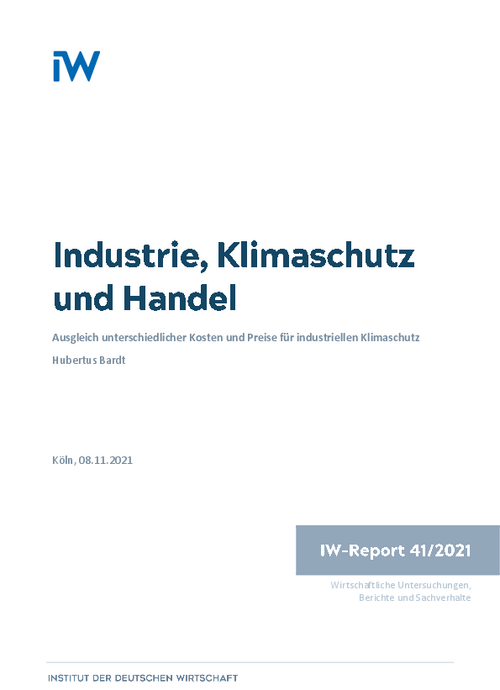In interrelated markets for exchangeable goods there is - apart from transaction costs - only one single price. In contrast, international climate protection is characterized by very different prices for greenhouse gas emissions.

Industry, climate protection and trade: Balancing different costs and prices for industrial climate protection

In interrelated markets for exchangeable goods there is - apart from transaction costs - only one single price. In contrast, international climate protection is characterized by very different prices for greenhouse gas emissions.
With emissions trading, Europe has introduced relatively high prices for a large proportion of global carbon emissions. However, most emissions worldwide are significantly cheaper or even free of charge. This is an indication of inefficiencies in global climate protection. On the one hand, expensive measures have to be undertaken, while on the other, more favourable measures are not taken. If the aim is to achieve the best possible climate protection with given resources, prices would have to be adjusted internationally. The price differences also result in considerable cost advantages and disadvantages for manufacturing companies in international competition. In order to enable industrial production on climate-friendly conditions, a compensation mechanism must be found. The aim is to enable investments in climate-friendly production methods at the locations that are characterized by demanding climate protection and therefore high prices for emissions. Shifting the investment focus to countries with lower emission costs would weaken the climate protection countries economically without reaching significant progress in reducing emissions. It would also undermine the ability to develop technologies to mitigate climate change worldwide. Different instruments are available, which reduce the additional costs that arise from the different pricing. The public funding of climate protection investments, for which there can currently be no amortization on the market due to the politically set price differences, is just as much a part of the instruments as the funding of ongoing climate protection measures, which is in principle limited in time, but is based on climate protection measures for a long period of time due to the long investment period. For this purpose, models must be developed that weaken price signals in markets as little as possible. International, possibly sectoral, climate clubs would also be a promising instrument. If comparable prices can be agreed for individual products in the most important production locations, that would be an important step for international climate protection without distorting competition at the expense of the most climate-friendly economies.

Industry, climate protection and trade: Balancing different costs and prices for industrial climate protection

More on the topic

Compendium 5.5: CO2 Regulation of Road Transport in Europe
With the Compendium CO2 Regulation in Europe, the IW has been providing the interested public with a comprehensive collection of data on the development of CO2 emissions from passenger car traffic in the European Union, as well as on the applicable regulatory ...
IW
Financing the Sustainability Agenda
The EU has set legally binding targets for climate-neutrality by 2050. To succeed in the transition to a low-carbon economy, companies need to continuously develop new and improved climate-friendly technologies, and to adopt or move towards low-carbon business ...
IW